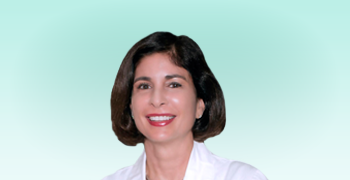
Ask the Doctor
Sun Safety
by Dr. Lori Byrd
Sun Safety
by Dr. Lori Byrd
What is sun safety?
- Sun safety is the practice of taking simple steps to reduce overexposure to the sun’s rays while still enjoying the outdoors. Practicing sun safety can dramatically reduce your incidence of skin cancer.
- Skin cancer is the most common cancer in the U.S.
- 3.5 million new skin cancers in more than two million people are diagnosed annually.
- Almost 9,500 people die from melanoma, the most dangerous form of skin cancer,every year.
- Over the past 40 years, the incidence of melanoma increased by 800 percent among young women and 400 percent among young men.
- Non-melanoma skin cancers such as squamous cell carcinomas have also reached critical levels, killing more than 3,000 people annually.
- 90 percent of non-melanoma skin cancers are associated to ultraviolet radiation from the sun.
- A person’s risk for skin cancer doubles if he or she has had five or more sunburns at any age, and just one blistering sunburn in childhood or adolescence more than double’s one’s risk of developing melanoma later in life.
- The incidence and impact of skin cancer can be dramatically reduced through preventive behaviors and early detection.
Prevention/Detection
- To adequately protect your skin and find skin cancer early dermatologists recommend the following:
- Generously apply a broad-spectrum, water resistant sunscreen with a Sun Protection Factor (SPF) of at least 30 to all exposed skin. “Broad-spectrum” provides protection from both ultraviolet A (UVA) and ultraviolet B (UVB) rays. (Exposure to either can lead to skin cancer.) Apply sunscreen to your skin at least 15 minutes before sun exposure and re-apply every 2 hours, even on cloudy days, and after swimming or sweating.
- Wear protective clothing, such as a long-sleeved shirt, pants. a wide-brimmed hat and sunglasses,where possible. Sun protective clothing with an SPF can be purchased online and in most sporting goods stores.
- Seek shade when appropriate, remembering that the sun’s rays are strongest between 10 a.m. and 4 p.m. Avoid the peak hours of sun exposure.
- Use caution near water, snow and sand as they reflect the damaging rays of the sun, which increase your chances of sunburn.
- Get vitamin D safely through a healthy diet and vitamin supplements and not through sun exposure.
- Avoid tanning beds. Ultraviolet light from the sun and tanning beds can cause skin cancer and wrinkling. If you want to look tan, consider a self tanning product, but continue to use sunscreen with it.
- Check your birthday suit on your birthday. If you notice any new lesions or moles, or anything changing, growing, or bleeding on your skin, see a dermatologist. If you have had a skin cancer ,melanoma, or a atypical mole, you should do monthly self skin exams. Skin cancer is very treatable when caught early.
- Sun Safety is very important in preventing skin cancer. Sun exposure is the most preventable risk factor for skin cancer, including melanoma. It’s easy to protect your skin: Apply broad spectrum SPF 30+ sunscreen, wear protective clothing, and seek shade. Check your skin and see a dermatologist if you notice any new lesions or moles or anything changing, growing or bleeding.
